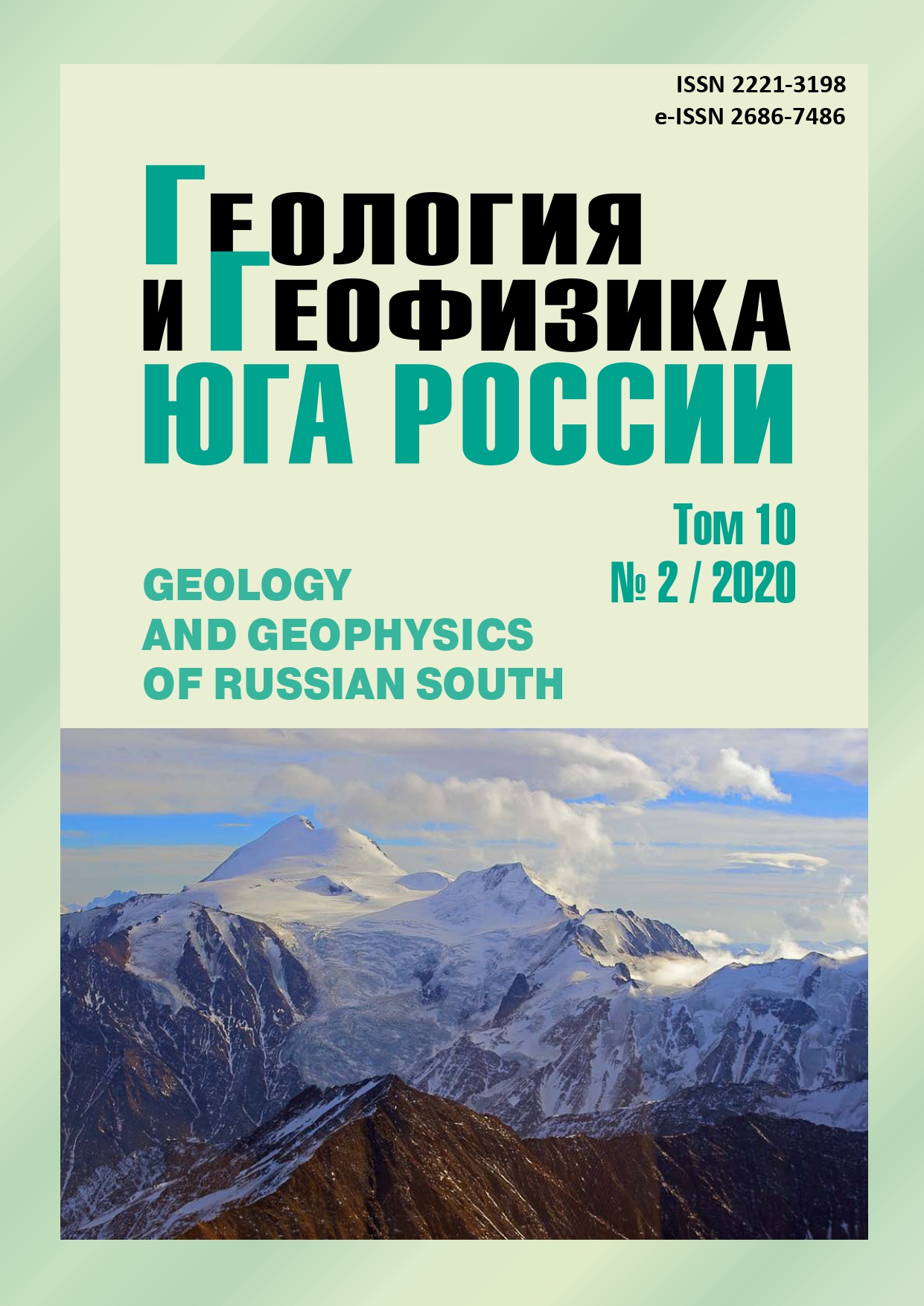Spatial distribution of Permian-Triassic deposits of the Eastern Ciscaucasia and their oil and gas potential
Abstract
Relevance. The urgency of the studied problem lies in the fact that the oil and gas fields of the Eastern Ciscaucasia are one of the longest developed in Russia. However, at present, when the volume of exploration for oil and gas has significantly decreased, the increase in hydrocarbon reserves has decreased to a minimum. But according to estimates of various geological services of the Russian Federation, in the deeply submerged Permo-Triassic sediments of the East Stavropol and Plain Dagestan, a significant amount of hydrocarbon raw materials may still be contained. And to determine the correct complex of geological exploration for oil and gas, a comprehensive analysis of all geological and field geophysical materials, results of laboratory analysis of petrophysical properties, generalization and revision of the results of testing and testing of carbonate deposits of the studied deposits in order to identify patterns of reservoir development are necessary. In this regard, the implementation of this work is currently an urgent task. The purpose of the work is to summarize numerous studies on the lithological and petrographic features of the Permian-Triassic deposits of the Eastern Ciscaucasia and its bituminological characteristics, which indicate that it contains powerful rock strata with a rich potential for generating liquid and gaseous hydrocarbons. First of all, these include carbonate and carbonate-terrigenous rocks of the Lower-Middle Triassic of marine origin (Neftekumskaya, Kultayskaya, Demyanovskaya and Kizlyarskaya suites). A significant amount of hydrocarbons could be generated by both carbonate-terrigenous and terrigenous variegated rocks of the Middle Triassic of the lagoon-marine and lagoon-continental genesis (Plavnenskaya and Zakumskaya Formations), as well as terrigenous variegated strata of rocks of the upper Perm mainly of the marine genesis (Kuman Formation). Research Methods. The article discusses the problems of dividing a section into formations and separating reservoirs, assessing their filtration and reservoir properties of reservoir rocks, substantiating oil and gas saturation and permeability of productive formations. In order to establish the patterns of reservoir distribution and make recommendations for geological exploration aimed at finding oil and gas in the studied oil and gas complex, the lithofacial, petrophysical, and capacitive-filtration properties of reservoir rocks were analyzed in the context of the Lower Triassic sediments of the Neftekum Formation. The paper also presents the results of geophysical and laboratory studies, which contain data on the petrophysical and physicochemical properties of the studied rocks of the Lower Triassic sediments: porosity; volume weight; carbonate content; hydrophobicity coefficient, electrical resistivity; interval propagation time of elastic longitudinal waves. The results. From a comprehensive analysis of the distribution of the leading petrophysical parameters and the results of well testing, it is clear that oil flows from the carbonate reservoirs of the Neftekum Formation were obtained only in the southeast. In the area of chemogenic (dolomitic) carbonate accumulation, the XI-XII layers of medium subformation are productive, in the field of mass development of bioherm constructions and inter-riff depressions, I-VI layers of the Neftekum suite are productive. In areas of shallow carbonate accumulation are water-saturated reservoirs.


